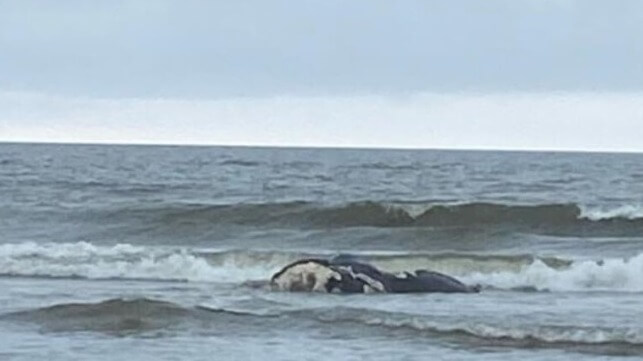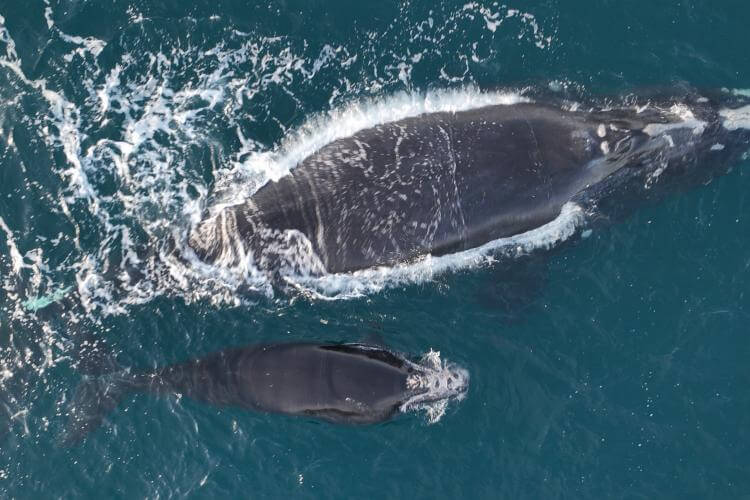First Right Whale Calf of the Year Has Been Found Dead in Georgia

A baby North Atlantic right whale that was injured in a vessel collision earlier this year has been found dead on a beach in Georgia. The whale was the first known calf of the year, the latest of eight siblings born to a female known as Juno. (The species is so endangered that its survival hinges on the fate of individuals, and each is numbered and tracked by NOAA.)
The calf was first spotted off South Carolina in early January, and it had sustained serious injuries to its head from a vessel strike. At the time, NOAA assessed that the injuries were serious enough that it would likely die. By the time it washed up in Georgia, it had been heavily scavenged by sharks, and genetic testing will be required to determine whether it was male or female.
NOAA does have early suspicions about the nature of the accident. Based on measurements of the cuts on the calf's head, and the corresponding size of the propeller involved, NOAA suspects that the vessel that struck the calf was about 35-57 feet in length. A vessel of this size would not be subject to current NOAA speed restrictions.

Juno and her injured calf off Georgia, February 2024 (NOAA)
"Human activity has set this species on a collision course with extinction. With an amended vessel speed rule, this death may never have happened,” said Greg Reilly of the International Fund for Animal Welfare.
NOAA advances new vessel speed rule
On Wednesday, NOAA confirmed that it has advanced a new rule that would expand the scope of the seasonal 10-knot speed limit in whale conservation areas along the East Coast. An agency spokesman told Savannah Morning News that the measure has been sent to the White House's Office of Management and Budget for review, a step forward along the rulemaking process.
The existing speed rule covers all vessels over 65 feet in length, and the revised rule would add all small vessels over 35 feet and double the coverage area. The new measure is intended to reduce the frequency and lethality of whale strikes, and has been in the works for 18 months.
Calves and their mothers - the key to the species' future - are particularly vulnerable to high speed vessel strikes, according to NOAAds.
“A newborn calf spends most of its first few months of its life on the surface with its mother,” said Erica Fuller, senior attorney at Conservation Law Foundation, at the outset of the rulemaking process in 2022. “Given that these whales are tough to see under the best of circumstances, slowing boats down is the only way to prevent collisions."
In addition to the speed rule, NOAA is partnering with NASA to develop satellite tracking for individual whales in an attempt to reduce the risk of collision. With Inflation Reduction Act funding, NOAA Fisheries is investing $500,000 alongside NASA’s Center of Excellence for Collaborative Innovation (CoECI) to find the best tracking solutions.
The American Pilots Association (APA) has advocated for this kind of tech-focused whale conservation strategy for years, and it opposes the 10-knot speed limit for smaller craft. The expanded speed limit would affect every pilot boat on the East Coast, according to APA. But the association says that NOAA appears to be receptive to a technology-based, speed-neutral regulation, based on the tenor of a recent conference.
"Other countries, including Canada, seem to be ahead of the U.S. in integrating advanced detection technologies into overall marine mammal protection efforts, so it is welcome news that NOAA has shifted its focus," said APA Executive Director-General Counsel Clay Diamond in a statement Tuesday.
No comments:
Post a Comment